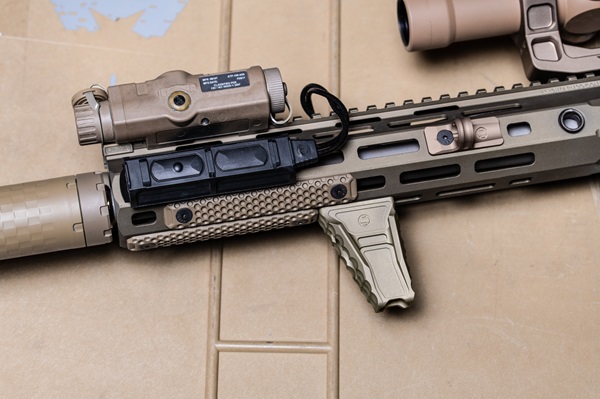The world of firearms has witnessed a continuous evolution in technology and design, and one critical component that significantly influences shooting performance is the foregrip. From angled grips to vertical grips, hand stops, and specialized options like AR foregrips, each design enhances control, accuracy, and the overall shooting experience. In this exploration, we delve into the nuanced world of foregrip designs and how they impact the performance of various firearms.
The Anatomy of Foregrips:
Foregrips, mounted on the front underside of a firearm, play a pivotal role in providing shooters with additional control and stability. The variety of designs available in the market allows users to tailor their firearms to specific needs, whether it be for tactical applications, competition shooting, or recreational use.
1. Angled Grips:
Angled foregrips have gained popularity for their ergonomic design, offering a natural and comfortable hand position. These grips typically feature a slight slant, allowing the shooter to maintain a more relaxed and neutral wrist angle. This design proves beneficial for sustained shooting sessions, reducing fatigue and promoting better control.
In terms of shooting performance, angled grips excel in close-quarters engagements. The natural wrist angle facilitates quick target acquisition, making them ideal for dynamic situations where speed and agility are paramount. However, it’s essential to note that personal preferences may vary, and some shooters may find angled grips less intuitive for certain shooting styles.
2. Vertical Grips:
Characterized by a perpendicular orientation to the firearm’s axis, vertical foregrips offer a more traditional and straightforward grip. These grips provide a secure and stable platform for shooters who prefer a more vertical hand position. The design is particularly advantageous when controlling muzzle rise during rapid-fire sequences.
Vertical grips are favored by those engaged in precision shooting and situations where maintaining a consistent point of aim is crucial. The design’s inherent stability aids in minimizing recoil-induced muzzle climb, allowing for quicker follow-up shots and improved accuracy. However, users should be mindful of potential snagging issues in confined spaces, as the extended profile of vertical grips may hinder maneuverability.
3. Handstops:
Handstops, a minimalist alternative to traditional grips, prevent the shooter’s hand from inadvertently sliding forward. While not designed for gripping in the conventional sense, handstops offer a reference point to ensure a consistent hand placement on the firearm.
In terms of impact on shooting performance, hand stops are highly beneficial for shooters who prefer a more adaptive grip. By preventing the hand from moving too far forward, shooters can maintain better control over the firearm without committing to a specific grip style. This versatility makes handstops an excellent choice for those engaged in dynamic shooting scenarios where rapid transitions between targets are crucial.
4. Foregrip Materials:
Apart from design, the materials used in foregrip construction play a vital role in determining their impact on shooting performance. Common materials include polymer, aluminum, and rubberized coatings. Each material contributes to weight, durability, and tactile feel.
Polymer grips are lightweight and resistant to environmental elements, making them a popular choice for those seeking a balance between durability and weight. Aluminum grips, on the other hand, provide additional heft, contributing to firearm stability. Rubberized coatings enhance grip texture, ensuring a secure hold even in adverse conditions. Choosing the right material depends on individual preferences and the intended use of the firearm.
5. Adjustable Foregrips:
The advent of adjustable foregrips represents a notable stride in customization options for firearm users. These foregrips allow shooters to modify the grip angle, adapting it to their comfort and shooting style. This versatility is particularly advantageous for those engaged in multi-disciplinary shooting activities, where the demands on grip preference may vary. The ability to fine-tune the foregrip’s angle ensures that shooters can optimize their firearm for different scenarios, be it precision shooting, close-quarters engagements, or extended periods of sustained fire. The adjustable foregrip, exemplified by AR foregrips, stands as a testament to the ever-expanding possibilities for tailoring firearms to individual preferences, further emphasizing the role of foregrip design in shaping the overall shooting experience.
Conclusion:
In the world of shooting sports and tactical applications, the significance of foregrip design cannot be overstated. Whether it’s the ergonomic advantages of angled grips, the stability offered by vertical grips, or the adaptability of handstops, each design impacts shooting performance in distinct ways. As firearm enthusiasts continue to push the boundaries of innovation, the diversity of foregrip options available ensures that shooters can tailor their setups to match their unique preferences and requirements. Ultimately, understanding the nuanced relationship between foregrip design and shooting performance empowers individuals to make informed choices that enhance control and accuracy in their shooting endeavors.
